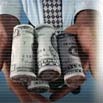Edmunds.com Reports True Cost of Incentives for May: Summer Discounting Season Begins
 |
SANTA MONICA, Calif.--Edmunds.com, the premier online resource for automotive information, estimated today that the average automotive manufacturer incentive in the U.S. was $2,497 per vehicle sold in May 2007, up $44, or 1.8 percent, from April 2007, and up $123, or 5.18 percent, from May 2006.
Edmunds.com's monthly True Cost of IncentivesSM (TCISM) report takes into account all automakers' various U.S. incentives programs, including subvented interest rates and lease programs, as well as cash rebates to consumers and dealers. To ensure the greatest possible accuracy, Edmunds.com bases its calculations on sales volume, including the mix of vehicle makes and models for each month, as well as on the proportion of vehicles for which each type of incentive was used.
"The summer incentives hike has started. In previous months, we have seen year-over-year declines in incentives spending, but this month the trend reversed," stated Jesse Toprak, Executive Director of Industry Analysis for Edmunds.com. “Automakers typically enjoy the highest sales volumes during the summer months in part because of the generous offers intended to match customers to remaining inventory – and the incentives only get bigger as the end of the current model year approaches.”
According to Edmunds.com, combined incentives spending for domestic manufacturers averaged $3,258 per vehicle sold in May 2007, down from $3,269 in April 2007. From April to May, European automakers increased incentives spending by $483 to $3,510 per vehicle sold; Japanese automakers increased incentives spending by $156 to $1,374 per vehicle sold; and Korean automakers decreased incentives spending by $233 to $1,524 per vehicle sold.
In May, the industry's aggregate incentive spending is estimated to have totaled approximately $3.7 billion, up from $3.3 billion in April. Chrysler, Ford and General Motors spent an aggregate of $2.5 billion, or 67.3 percent of the total; Japanese manufacturers spent $736 million, or 19.9 percent; European manufacturers spent $367 million, or 10 percent; and Korean manufacturers spent $107 million, or 2.9 percent.
|
True Cost of Incentives for the "Big Six" Automakers |
|||
|
Automaker |
May 2007 |
April 2007 |
May 2006 |
| Chrysler Group | $4,050 | $4,250 | $3,668 |
| Ford | $3,040 | $3,021 | $3,209 |
| General Motors | $2,963 | $2,813 | $2,761 |
| Honda | $1,399 | $1,069 | $922 |
| Nissan | $2,083 | $1,955 | $2,553 |
| Toyota | $1,140 | $1,027 | $886 |
Edmunds' AutoObserver.com has learned that this month, Honda broke its company record for incentives spending. “Honda is feeling a lot of competitive pressure. Some of their vehicles are a bit long in the tooth, and a handful compete in segments where generous incentives are essentially demanded. In those cases, the company has little choice. However, Honda’s newer and more fuel-efficient models sell with a fraction of the industry’s average incentive investment on the hood,” commented AutoObserver.com Senior Editor Michelle Krebs.
Among vehicle segments, minivans had the highest average incentives, $3,933 per vehicle sold, followed by luxury cars at $3,832. Sport cars had the lowest average incentives per vehicle sold, $937, followed by compact cars at $1,136. Analysis of incentives expenditures as a percentage of average sticker price for each segment shows minivans averaged the highest, 14.1 percent, followed by large cars at 13 percent of sticker price. Sport cars averaged the lowest, 3.2 percent, followed by luxury sports cars at 4.3 percent of sticker price.
Comparing all brands, in May Mini spent the least, virtually nothing, followed by Scion at $77 per vehicle sold. At the other end of the spectrum, Cadillac spent the most, $7,870, followed by Saab at $5,877 per vehicle sold. Relative to their vehicle prices, Saab and Cadillac spent the most, 17.8 percent and 15.6 percent of sticker price, respectively, while Mini spent essentially nothing and Scion spent just 0.5 percent.
About Edmunds.com True Cost of IncentivesSM(TCISM)
Edmunds.com's TCISM is a comprehensive monthly report that measures automobile manufacturers' cost of incentives on vehicles sold in the United States. These costs are reported on a per vehicle basis for the industry as a whole, for each manufacturer, for each make sold by each manufacturer and for each model of each make. TCI covers all aspects of manufacturers' various incentives programs (except volume and similar bonus programs), including dealer cash, manufacturer rebates and consumer savings from subvented APR and lease programs (including subvented lease residual values used in manufacturer leasing programs). Data for the industry, the manufacturers and the makes are derived using weighted averages and are based on actual monthly sales and financing activity.
About Edmunds Inc. (http://www.edmunds.com/help/about/)
Edmunds Inc. publishes four Web sites that empower, engage and educate automotive consumers, enthusiasts and insiders. Edmunds.com, the premier online resource for automotive consumer information, launched in 1995 as the first automotive information Web site. Its most popular feature, the Edmunds.com True Market Value®, is relied upon by millions of people seeking current transaction prices for new and used vehicles. Edmunds.com was named "Best Car Research Site" by Forbes ASAP, has been selected by consumers as the "Most Useful Web Site" according to every J.D. Power and Associates New Autoshopper.com Study(SM), was ranked first in the Survey of Car-Shopping Web Sites by The Wall Street Journal and was rated "#1" in Keynote's study of third-party automotive Web sites. Inside Line launched in 2005 and is the most-read automotive enthusiast Web site. CarSpace launched in 2006 and is an automotive social networking Web site. AutoObserver.com launched in 2007 and provides insightful automotive industry commentary and analysis. Edmunds Inc. is headquartered in Santa Monica, California, and maintains a satellite office in suburban Detroit.


